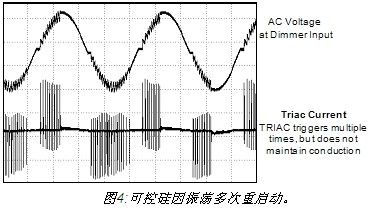Today, LED lighting has become a mainstream technology. The technology is maturing, and one of the signs is the introduction of a large number of LED lighting standards and specifications. Strict efficiency requirements have existed for quite some time and will continue to improve in the future. But in recent times, LED lighting designers have been more difficult to work with because they have to meet the following two requirements: dimming control for incandescent lamps and dimming control. .
Dimming is a very common feature of lighting systems. For incandescent lamps, it can be easily implemented at low cost. The dimming of LED lights is difficult, but for architects and residential users, they are reluctant to lose the advantages of dimming control when switching to LED lighting.
Power factor is a very important factor because high power factor can reduce the loss of the distribution network. The most effective way to reduce the impact of electricity use on the environment is to reduce waste, so regulators around the world are further tightening their power factor specifications. An example of this is the Energy Star Solid State Lighting Energy Efficiency Specification (09/12/07), which states that the power factor (PF) for residential lighting products should be greater than 0.7 and the power factor (PF) for commercial lighting products should be greater than 0.9.

LED bulb and luminaire manufacturers are responding to these requirements and naturally want their products to be as versatile as possible. Therefore, they are in great need of LED driver circuits compatible with various dimmers to achieve high efficiency and power factor of 0.9 or higher.
Dimming controller
The lighting controller operates in either line dimming or secondary side dimming. The simplest line dimming method is the leading edge thyristor controller. This is currently the most commonly used lighting control method, but unfortunately, the use of thyristor controllers to dim LED lights can cause a lot of problems. More advanced line dimmers are electronic leading or trailing edge dimmers. The secondary side electronically controlled dimmer is used in professional lighting systems.
The performance of thyristor controllers in incandescent lamps is impeccable, but there are various negative effects in LED lamps, including flicker, uneven illumination, audible noise, and flicker. To understand why, you must first understand how thyristor dimmers work.

Dimming control is achieved by changing the phase angle of each half cycle of the thyristor conduction. The current in the filament of the bulb is closely related to the phase angle of the dimming signal, and the phase angle varies from 0° (near 0°) to 180°. One of the important parameters of thyristors is the holding current (IH). This is the minimum load that the thyristor must maintain to remain conductive without the use of a gate drive. In order to maintain stable operation of the thyristor, the current cannot be zero, and the typical value of IH is between 8 mA and 40 mA. Maintaining current is not a problem when driving incandescent lamps. However, due to the high efficiency of the LED lamp, problems occur when the holding current cannot be maintained and the lamp is extinguished. This situation can easily occur if any oscillations occur.
For thyristor controllers, the incandescent lamp has a very low impedance and therefore does not oscillate. In contrast, LED drivers have high impedance, and their input EMI filter circuits consist of capacitors and inductors. During each half cycle, an inrush current occurs when the TRIAC turns on. In the worst case, the input voltage reaches a maximum at a 90° conduction angle. Due to the presence of line/filter impedance, the bus voltage will overshoot and oscillate. If the oscillation causes the current to drop below IH, the thyristor will turn off (Figure 3).

When the TRIAC turns off, R1 and R2 recharge the DIAC (Figure 2) to the breakdown threshold. The DIAC then turns on the TRIAC and restarts the next switching cycle. The result is that the thyristor is restarted multiple times during the same input line cycle (Figure 4).
